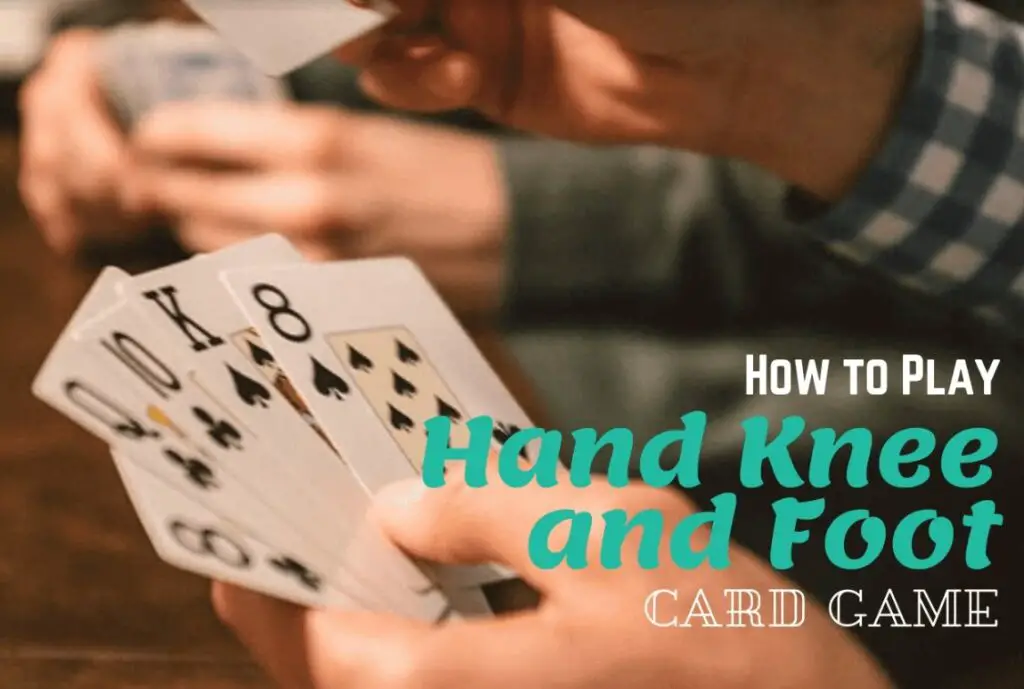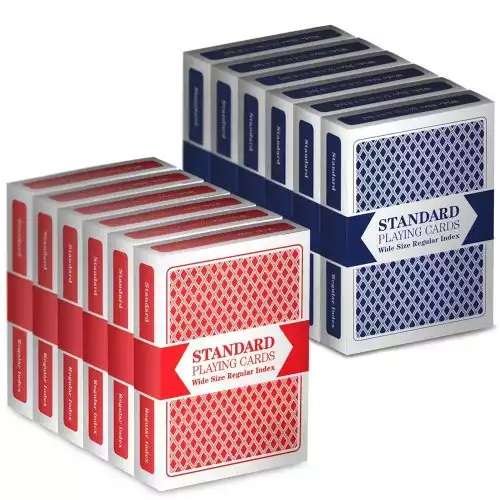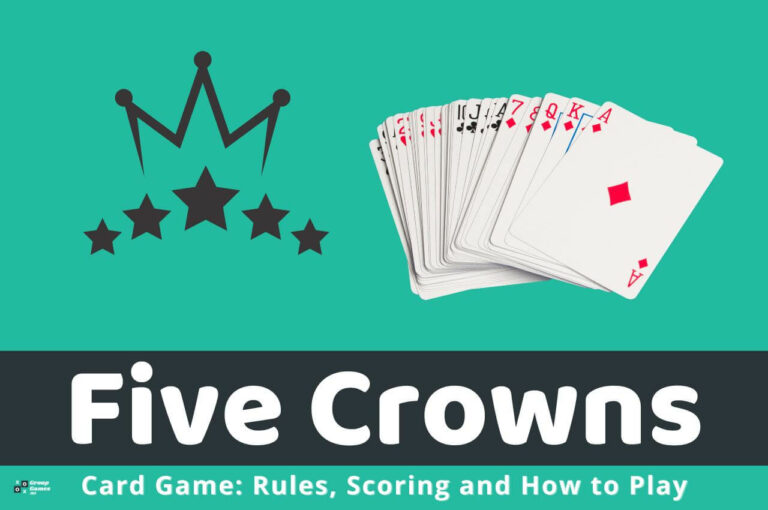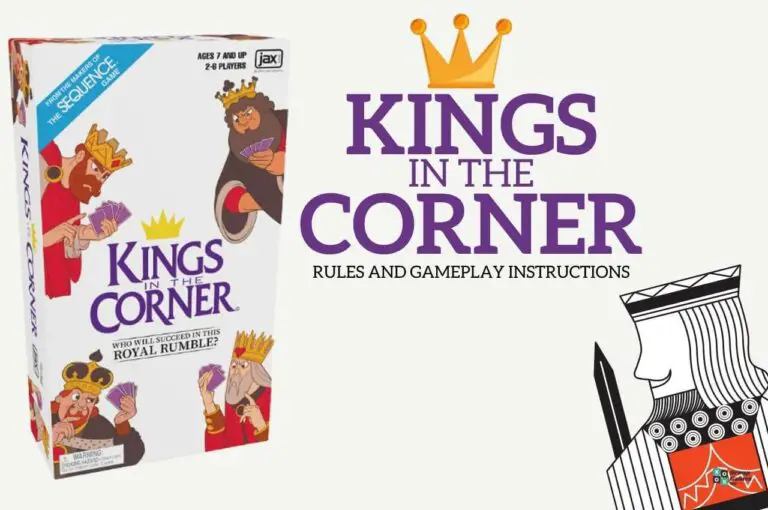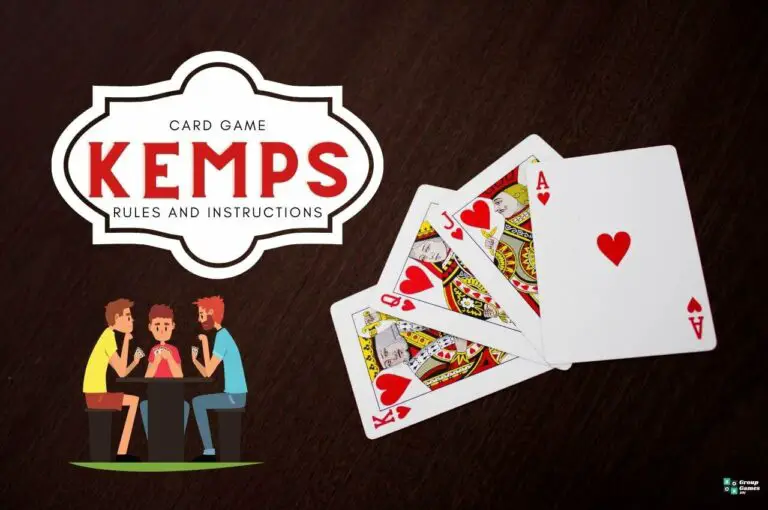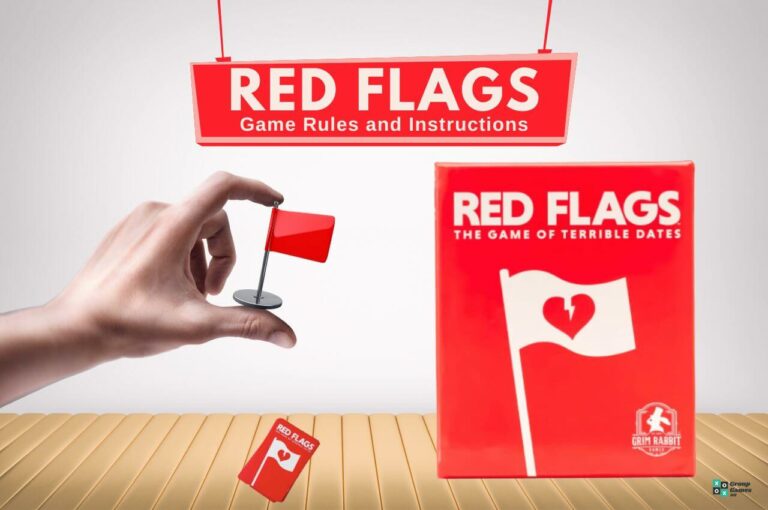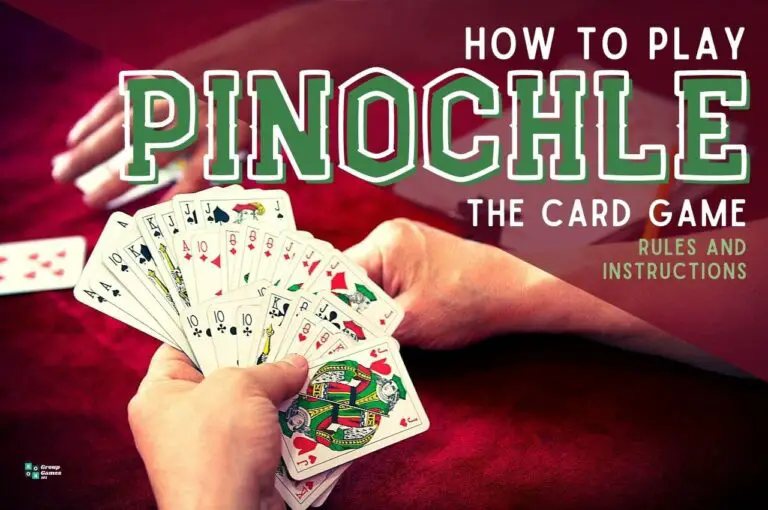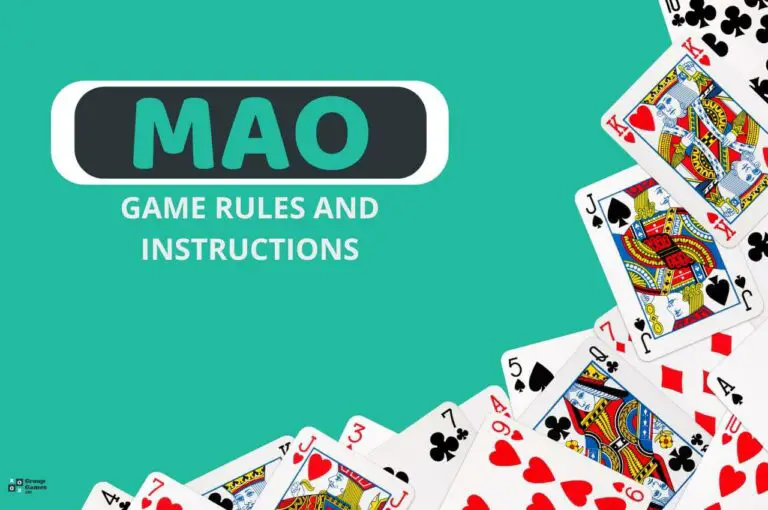Are you finding that the card games that you play have become too easy and are looking for a fresh challenge? Then allow us to introduce Hand, Knee, and Foot, a points-based game perfect for the true experts of card games.
Also known as ‘Triple play’, the game is a variation on the more traditionally played ‘Canasta’ but designed to be more complicated.
The card game requires a large group of participants and even more cards to begin playing. Hand, Knee, and Foot include more math and strategic thinking than conventional card games.
The card game utilizes a specific scoring system and the concept of melds, but we will cover all these details and more in this article.
What is Hand, Knee, and Foot card game?
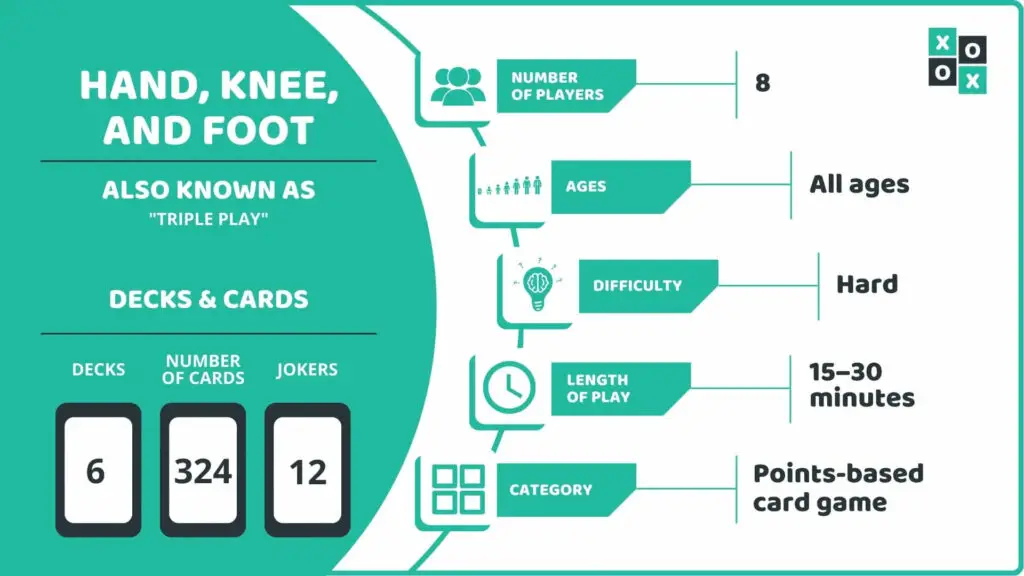
Similar to a card game named ‘Canasta’ the main difference is the number of cards that players need in order to start playing.
Number of Players Required: 4 teams of pairs so about 8 players.
Who Can Play It: All ages but may be tricky for younger players to grasp. Requires patience.
Difficulty: Hard, the scoring is more complicated than most other card games.
Main Objective: Score more points than the other teams within four hands. Score points by forming melds of between 3-7 cards.
Why we love it: Deceptively complicated, if you happen to have several decks lying around this is the perfect game for you. As it’s played with a partner it can also show which couple is best at cards among your peers.
What do I need to play Hand, Knee, and Foot card game?
Once you’ve gathered enough players, the only thing you’ll need to play is a huge amount of cards.
The game requires around 324 cards, which works out about 6 decks. If you haven’t already accumulated these then consider this cost-effective bulk buy from Brybelly.
Make sure you also have a pen and paper or app on your phone in order to be able to properly keep score.
How to set up your game of Hand, Knee and Foot
Gather together the 6 decks needed to play, and make sure you include all 12 jokers too. These are also used in Head, Knee, and Foot.
Decide on your pairs either mutually or drawing names out of a hat. Partners do not sit next to each other, but opposite so that turns alternate between pairs as the game goes around the circle.
Shuffle all of the cards that are being used and deal out 15 cards to each player.
Next, make sure that each player has both a knee-pile and a foot-pile. Give these to each player face-down and consist of 13 cards in the knee-pile and 11 in the foot-pile.
Allow players at this stage to look at the 15 cards dealt but cannot yet touch the knee and foot piles.
Place any remaining cards that aren’t dealt to players in the middle of all participants. This is called the stock.
Turn the card on top of the stock over so it’s picture is side up and place it next to the stock. This becomes the upcard and is the first card of the discard pile.
If the upcard is either a 2, red 3, 5, 7 or a joker card then bury it back into the stock and choose the next card on top of the stock.
Hand, Knee, and Foot Rules and Gameplay
After all that set-up you’re almost ready to begin.
You will need to understand how the scoring works. First, we will cover the gameplay.
Starting the game
All players start by looking at their 15 cards.
Players who are holding a red 3 lays it face up on the table and draws a replacement card. One player from each pair handles collecting their team’s red 3s and also any formed melds.
Play begins with the player who is on the dealers left.
How to play Hand, Knee, and Foot card game
- The gameplay has players alternating turns going round in a clockwise fashion.
- When it is their turn, a player can draw by either taking two cards from the stock or by replacing two cards in their hand with two cards in the discard pile.
- Players can only use the cards in the discard pile if they can prove that the upcard in the discard pile can form a meld.
- Players cannot meld black 3s so if the upcard is a black 3 then players cannot choose from the discard pile.
- If the upcard is a wildcard then players can only draw from the discard pile if that player has two cards of the same rank. For example, if the discard pile has a 2, the player will need to have two 2s to draw from it.
- After a player finishes drawing, then they can attempt to form melds or add to any existing melds that they or their partner have formed.
- Forming melds is how players score points to win the game. Melds can be quite involved so it has its own information section below.
- If a player begins their turn by drawing from the stock then they end their turn by getting rid of a card in their hand.
- If a player has picked up cards from the discard pile they do not have to end their turn by getting rid of a card. The next player must also draw from the stock.
- Players aim to form a canasta with their partner, which is a meld of seven cards.
- Once a team has formed their first canasta, a player from that team who’s turn is next can pick up their knee-pile. Their partner on their turn must also pick up their knee-pile otherwise they suffer a 1000 point penalty.
- Players then pick up and use their foot-pile once they have used up their knee-pile. This continues until players can no longer form any melds with the remaining cards.
- Tally points up depending on the quality of each team’s melds that players make. Total the value of each melded card.
- Any cards that are remaining in each player’s hand deducts from their total.
- Once each team has a score, then reshuffle the cards and redeal. The game repeats four times.
- Declare the team with the highest total after all four rounds the winners.
Forming melds
A meld is a group of cards that in this card game consists of 3-7 cards of the same rank.
The players draw when the game begins. Melds in ‘Hand, Knee, and Foot’ come in two different varieties – clean meld or dirty meld.
A clean meld consists of no wild cards whereas a dirty meld includes wild cards.
Melds of three to five cards can only have one wild card included and melds of six or seven may have up to two. If possible players may also make a meld consisting solely of wild cards.
Form melds with both yours and your partner’s cards.
Whether you can accept a meld depends on how many game rounds players are on. It requires a minimum point threshold.
- The first deal/round needs to be at least 50 points.
- The second deal/round needs to be at least 90 points.
- The third deal/round needs to be at least 120 points.
- The fourth deal/round needs to be at least 150 points.
If you or your partner is adding to pre-existing melds than the points requirement isn’t required.
Players cannot move cards between melds once they’re formed. Players also cannot have two separate melds of the same rank unless a player forms a canasta.
Once players form a canasta, players can begin another meld of the same rank.
Hand and Foot Rules Variations
There are many popular variations to the individual rules within the Hand, Knee, and Foot gameplay. Here are some of the most common:
- The initial piles have different numbers of cards (11 cards in the knee-pile and 13 in the foot-pile).
- Red threes are worth 500 points. You cannot build a set of threes, so they play against you.
- Black threes are worth 5 points.
- Two to eight players can play the game as individuals. They use as many decks as players plus one (e.g., three players use four decks).
- Players can form melds of more than seven cards.
Keeping score in Hand, Knee, and Foot
Certain cards also have different points and properties attached to them. Understanding them is important for gameplay.
Scoring and card ranks
- Aces are worth 20 points.
- K to 8s is worth 10 points.
- 7s to 4s are worth 5 points.
- Jokers are ‘wild’ and are worth 50 points.
- 2s are also ‘wild’ and are worth 20 points.
- Red 3s are a ‘bonus’ card – Lay these in front of a player and replace with a new card. They are also worth 100 points
- Black 3s are cards that cannot be ‘melded’.
- Suits do not matter for any card that isn’t a 3.
- Wild cards – Used in place of another card to form a meld.
‘Basic Books’
Another aspect of scoring in Hand, Knee, and Foot is the concept of the basic books.
This is what teams are working towards throughout the game to score the most points at the end of each round.
These include…
- A natural canasta of 7’s which scores 5000 points per canasta.
- A natural canasta of 5’s which scores 3000 points per canasta.
- A canasta of wild cards that score 2500 points per canasta.
- Any natural canasta which scores 500 points per canasta.
- Any mixed canastas which score 300 points per canasta.
Frequently Asked Questions
What are the main differences between Hand, Knee, and Foot and it’s variation Canasta?
The way that the scoring works is the main difference between the two games. In Hand, Knee, and Foot the scoring rewards more strategic plays and encourages teamwork.
A third deck is also added, as the name of the game refers to each of the three decks that are in play. In comparison, Canasta only uses two decks and fewer cards overall.
Who designed the game Hand, Knee, and Foot?
This version of Canasta was originally created by Sue Henberger in Sun City, Huntley in 2005.
She was a member of the towns ‘Canasta Club’, and created it as she wanted to challenge her club with a spin on the more traditional version of the game.
Alternative Games to Hand, Knee, and Foot
If you and your friends found yourselves enjoying this more complex version of cards with melds, we may have another game you would enjoy.
Conquian rules require players to form melds just like Hand, Knee, and Foot and is best played with two players. Ideal if you don’t have the numbers required for Hand, Knee, and Foot.
If math games are your thing then you may also like to consider Qwixx. This game also rewards strategic planning throughout gameplay whilst also helping to boost your math skill.
For those who are looking for even more games similar to this one, have a look at how to play Spoons and Biriba game.

